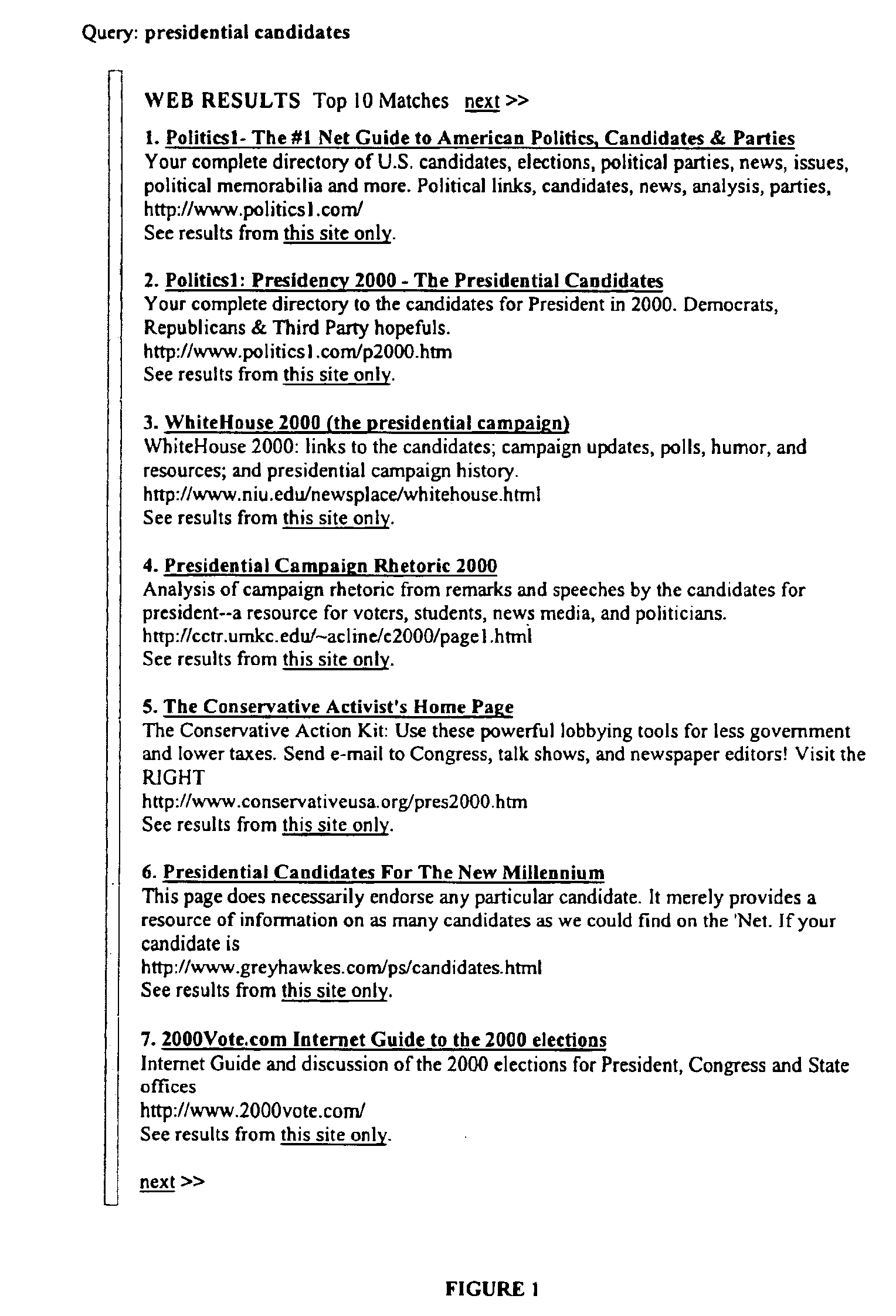System for fulfilling an information need
a technology for information needs and systems, applied in data processing applications, instruments, fire alarms, etc., can solve the problems of many conventional search engines, world wide web search engines, and document pages which contain the phrase alexander graham bell, and achieve the effect of faster and more efficient processing of queries
- Summary
- Abstract
- Description
- Claims
- Application Information
AI Technical Summary
Benefits of technology
Problems solved by technology
Method used
Image
Examples
Embodiment Construction
FIG. 2 shows a representative embodiment of a networked computer system 1 that may be used to implement the present invention. A searching site 2 is logically connected, via a network such as the Internet, to one or more client computer systems 3. Client computer system 3 can comprise any available computer but is typically a personal computer equipped with a processor, memory, display, keyboard, mouse, storage devices, and appropriate interfaces for these components. Client system 3 accepts a user-generated query and transmits the query to searching site 2. Preferably client system 3 operates a Web browser, and the query is entered into the Web browser that transmits the query to searching site 2. Searching site 2 may include one or more query servers 4, which may be logically connected to one another for example through a local area network, intranet, or the like. Query servers 4 may be connected to one or more peripheral storage devices 5. Searching site 2 also includes indexing ...
PUM
 Login to View More
Login to View More Abstract
Description
Claims
Application Information
 Login to View More
Login to View More - R&D
- Intellectual Property
- Life Sciences
- Materials
- Tech Scout
- Unparalleled Data Quality
- Higher Quality Content
- 60% Fewer Hallucinations
Browse by: Latest US Patents, China's latest patents, Technical Efficacy Thesaurus, Application Domain, Technology Topic, Popular Technical Reports.
© 2025 PatSnap. All rights reserved.Legal|Privacy policy|Modern Slavery Act Transparency Statement|Sitemap|About US| Contact US: help@patsnap.com



